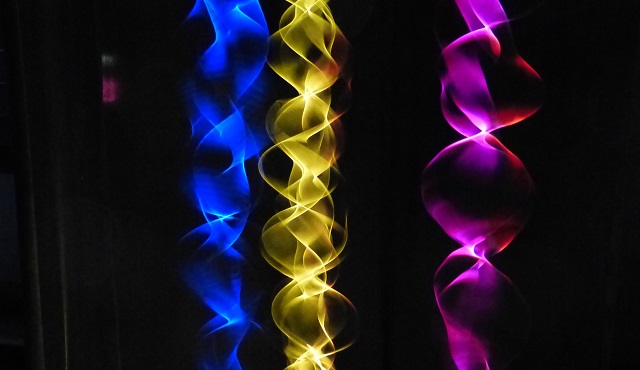Key Idea: When light radiation of a certain frequency incident on the surface of the metal plate, causing the emission of electron from that surface plate. And the Kinetic Energy of that electron is directly proportional to the frequency of the light, that Incident on the metal plate.


Some Main Points:
•By 1905 it was familiar the energy of photoelectrons increases with increasing frequency of incident light and is independent of the intensity of the light.
•The experimental results disagree with classical electromagnetism, which predicts continuous light waves transfer energy to electrons, which would then be emitted when they accumulate enough energy.
•In 1905, Albert Einstein published a paper advancing the hypothesis light energy is carried in discrete quantized packets to explain experimental data from the photoelectric effect.
•For a given metal and frequency of incident radiation, the rate at which photoelectrons are ejected is directly proportional to the intensity of the incident light.
•The discoveries by Hertz led to a series of investigations by Hallwachs, Hoor, Righi and Stoletov on the effect of light, and especially of ultraviolet light, on charged bodies.
•In 1902, Lenard observed the energy of individual emitted electrons increased with the frequency of the light.
•Einstein’s work predicted the energy of individual ejected electrons increases linearly with the frequency of the light.
•Learning of the photoelectric effect led to important steps in understanding the quantum nature of light and electrons and influenced the formation of the idea of wave–particle duality.
• The photoelectric effect is the emission of electrons when electromagnetic radiation, such as light, hits a material.
•Theoretical explanation Diagram of the maximum kinetic energy as a function of the frequency of light on zinc.
•The effect has found use in electronic devices specialized towards light detection and precisely timed electron emission.
•Increasing the frequency of the incident beam increases the maximum kinetic energy of the emitted photoelectrons, and the stopping voltage has to increase.
Watch this Video
Source:
[1] Wikipedia Contributors. “Photoelectric Effect.” Wikipedia, Wikimedia Foundation, 8 Nov. 2020, en.wikipedia.org/wiki/Photoelectric_effect. Accessed 16 Nov. 2020.
[2] Khan Academy Organic Chemistry. “Photoelectric Effect | Electronic Structure of Atoms | Chemistry | Khan Academy.” YouTube, 25 June 2014, https://www.youtube.com/watch?v=vuGpUFjLaYE. Accessed 16 Nov. 2020.
[3] pixy.org. “Lichtspiel Optics Light Blue Gold Image.” Pixy.org, 16 July 2020, pixy.org/5948017/. Accessed 16 Nov. 2020.

Excellent website. A lot of useful info here. I am sending it to some buddies ans additionally sharing in delicious. And certainly, thank you in your sweat!
Good website! I really love how it is easy on my eyes and the data are well written. I’m wondering how I might be notified when a new post has been made. I have subscribed to your RSS feed which must do the trick! Have a great day!
Comments are closed.